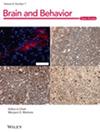Advancing Nutritional Status Classification With Hybrid Artificial Intelligence: A Novel Methodological Approach
Abstract
Purpose
Malnutrition remains a critical public health issue in low-income countries, significantly hindering economic development and contributing to over 50% of infant deaths. Under nutrition weakens immune systems, increasing susceptibility to common illnesses and prolonging recovery periods. This study aims to develop and evaluate a novel artificial intelligence-based classification method for nutritional status assessment using hybrid machine learning strategies, enhancing the accuracy and reliability of malnutrition detection.
Method
This study utilizes the fire hawk optimizer-based k-means (FHO-K-Means) clustering method to identify key physiological indicators associated with under nutrition in children. The analysis is conducted using the UNICEF dataset, encompassing data from Afghanistan, Albania, Algeria, and Zimbabwe. Following data normalization, the dataset is clustered via FHO-K-Means to establish optimal groupings. The clustered data is then partitioned into training and testing sets for classification using the extreme gradient boosting fuzzy (EGBF). The EGBF model is employed to classify nutritional states, including stunting, wasting, severe wasting, overweight, and underweight, providing a robust framework for predictive analysis.
Findings
The proposed FHO-K-Means and EGBF model demonstrated superior performance, achieving 99.84% accuracy, 99.5% precision, 99.8% specificity, and 100% sensitivity, with an F1 measure of 98.6% and a mean squared error (MSE) of 0.01%, outperforming existing classification techniques. These results indicate that the model offers a highly effective and scalable tool for identifying at-risk populations, informing targeted interventions to reduce the prevalence of childhood malnutrition, and lowering morbidity in poor countries.
Conclusion
This study developed an innovative FHO-K mean clustering and EGBF classification method for assessing childhood nutritional status in underdeveloped countries. The exceptional accuracy and predictive capability of the model make it a valuable tool for early malnutrition detection, enabling data-driven decision-making in public health and policy formulation. By improving malnutrition diagnosis and intervention strategies, this approach has the potential to reduce morbidity and enhance child health outcomes in resource-constrained settings.


 求助内容:
求助内容: 应助结果提醒方式:
应助结果提醒方式:


